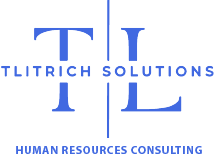In the ever-evolving landscape of talent management, businesses are constantly faced with the decision of whether to hire new employees or invest in the development of existing ones. This dilemma poses a crucial question for HR professionals: What is the optimal approach for maximizing return on investment (ROI) in human capital? Let’s explore the costs and benefits of hiring someone new versus training an existing employee.
The Cost of Hiring New Talent
Hiring new talent entails a multitude of expenses, both tangible and intangible. These include:
1. Recruitment Costs: Advertising job postings, conducting interviews, and engaging external recruitment agencies all come with a price tag.
2. Onboarding Expenses: New hires require training, orientation, and support during the initial integration phase, which can strain resources and productivity.
3. Time to Productivity: It takes time for new employees to ramp up and become fully productive in their roles, leading to potential delays in project timelines and deliverables.
4. Culture Fit: There’s always a risk that a new hire may not seamlessly integrate into the company culture, resulting in decreased morale and team cohesion.
The Value of Training Existing Employees
Investing in the development of existing employees can yield significant benefits, both for individuals and the organization as a whole:
1. Cost Savings: Training existing employees is often more cost-effective than hiring new talent, as it eliminates recruitment and onboarding expenses.
2. Retention and Engagement: Providing opportunities for skill development and career advancement demonstrates a commitment to employee growth, fostering loyalty and engagement.
3. Faster Time to Competency: Existing employees already possess institutional knowledge and familiarity with company processes, allowing them to quickly apply new skills to their roles.
4. Improved Morale and Productivity: Investing in employee development signals that the organization values its workforce, leading to increased morale, motivation, and productivity.
Finding the Balance: A Holistic Approach
While both hiring and training have their merits, the key to optimizing human capital investment lies in finding the right balance between the two:
1. Assess Needs: Evaluate the specific skills and competencies required for each role and determine whether they can be developed internally or are best sourced externally.
2. Promote Upskilling: Encourage a culture of continuous learning and development, providing employees with opportunities to acquire new skills and stay ahead of industry trends.
3. Strategic Recruitment: When hiring externally, prioritize candidates who not only possess the requisite skills but also align with the company’s values and culture.
4. Measure ROI: Regularly evaluate the effectiveness of training programs and recruitment strategies by tracking metrics such as employee retention, performance, and satisfaction.
In conclusion, the decision to hire new talent or train existing employees is not a one-size-fits-all proposition. By carefully weighing the costs and benefits of each approach and adopting a holistic talent management strategy, HR professionals can maximize ROI in human capital investment and drive sustainable growth and success for their organizations.
